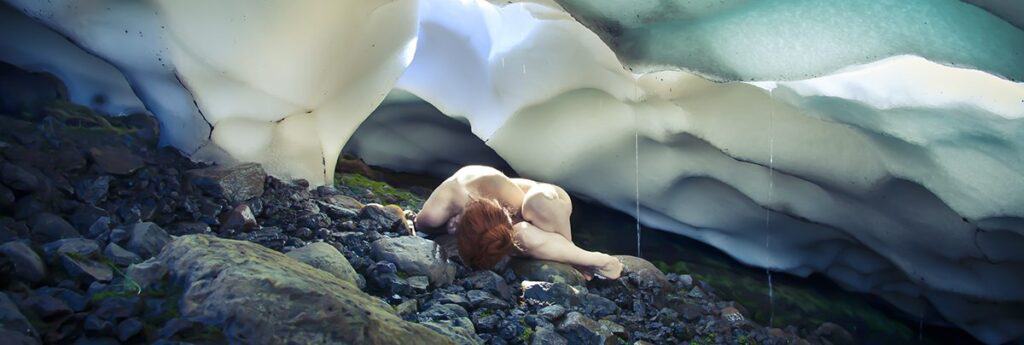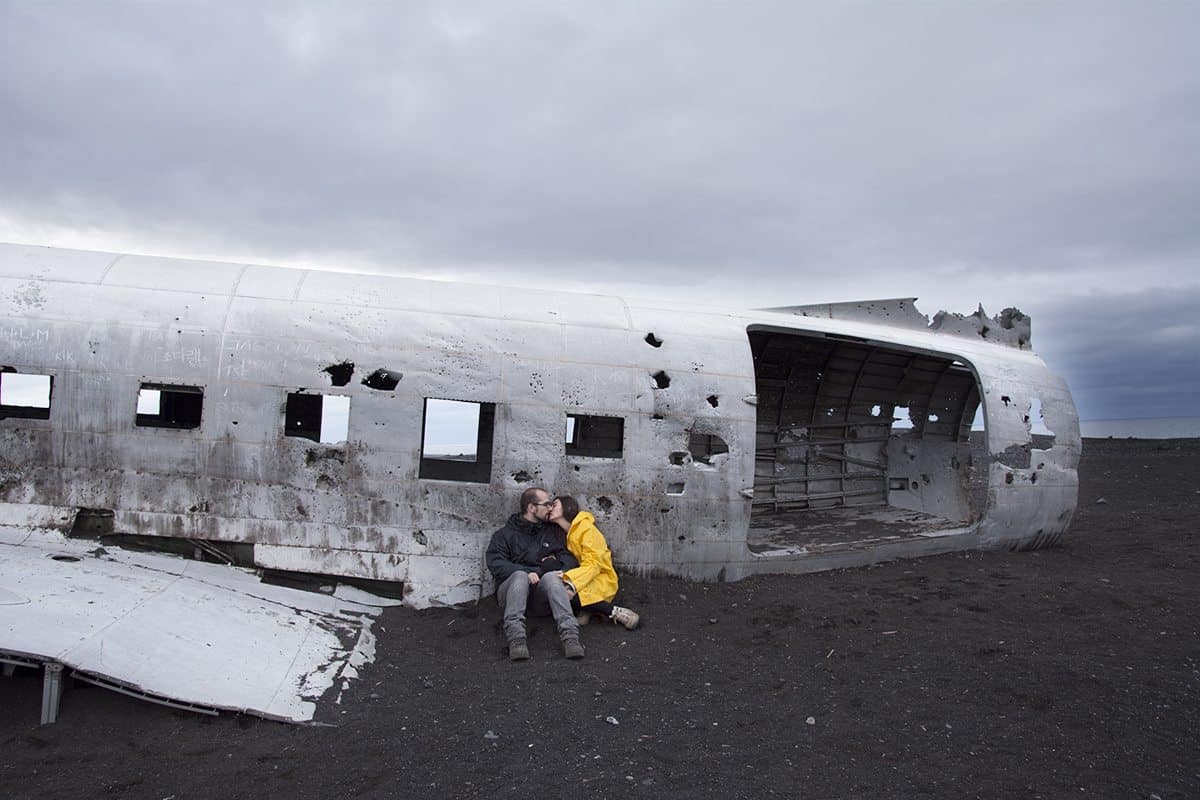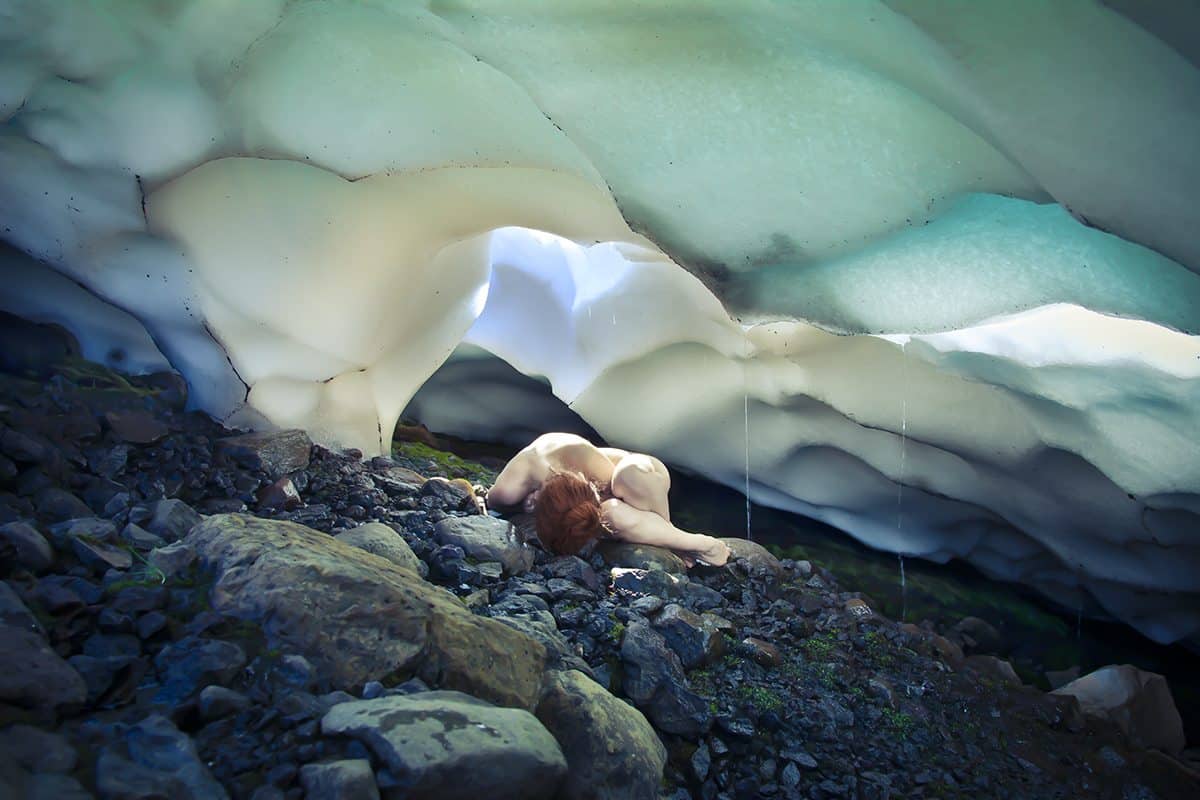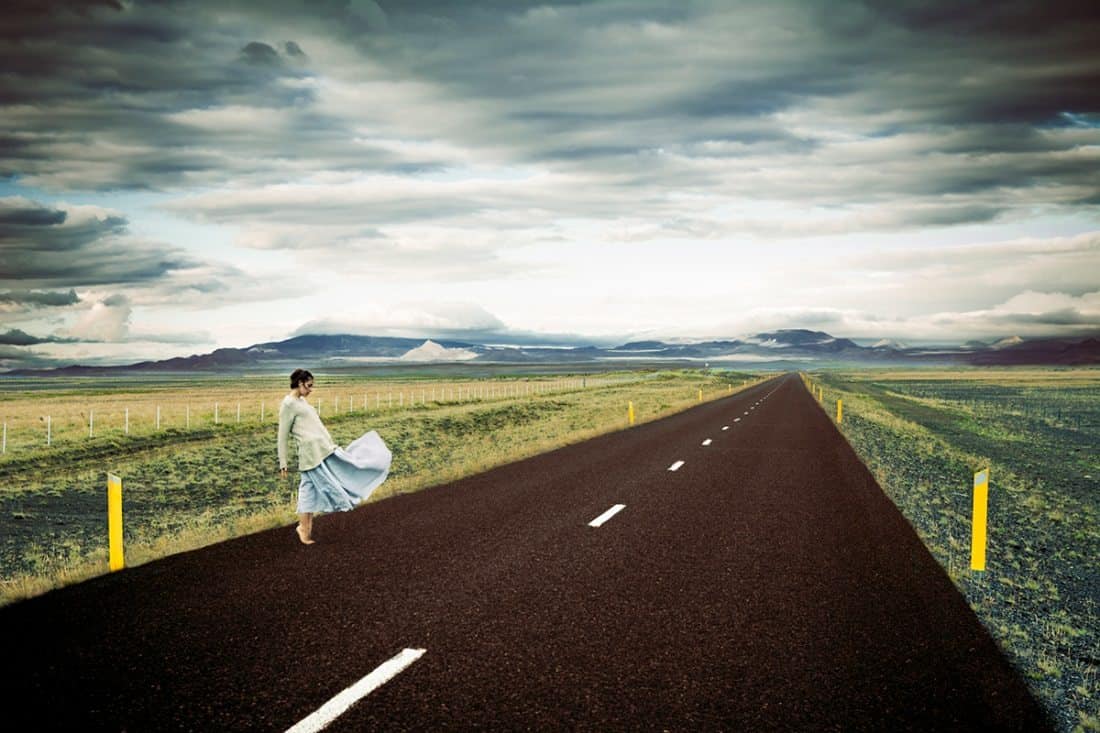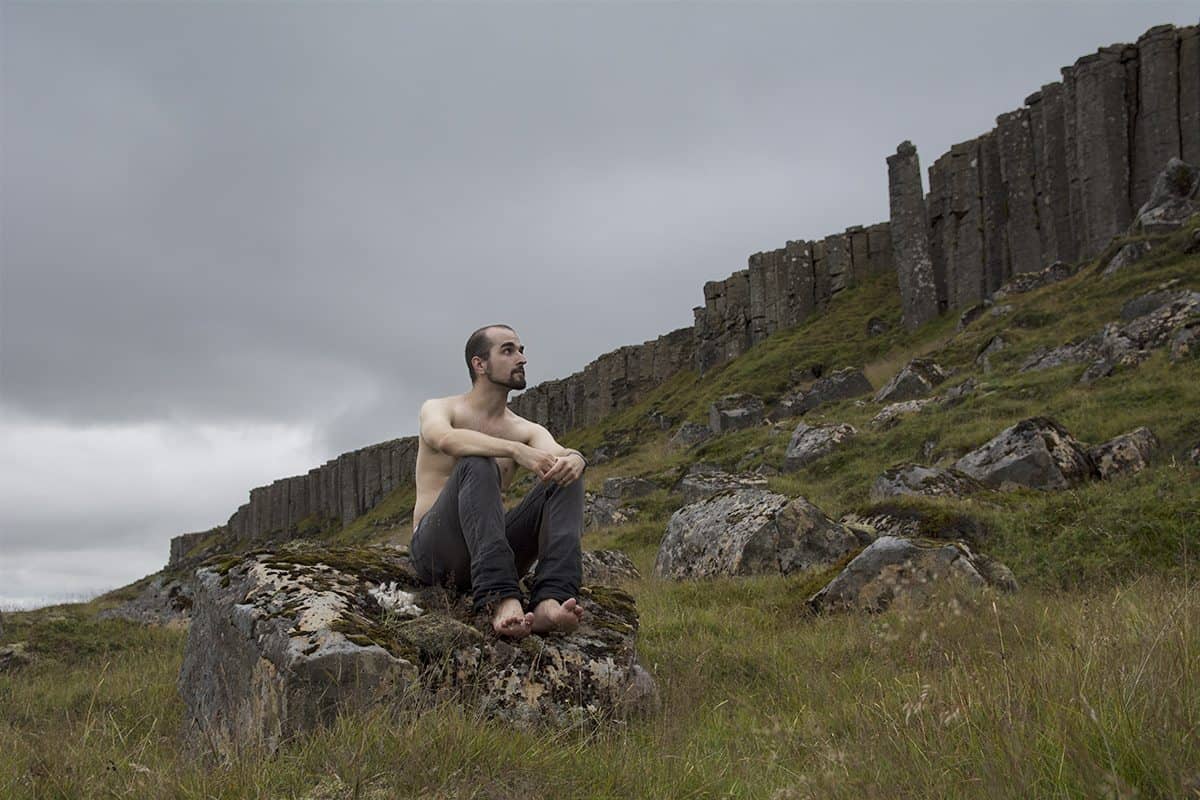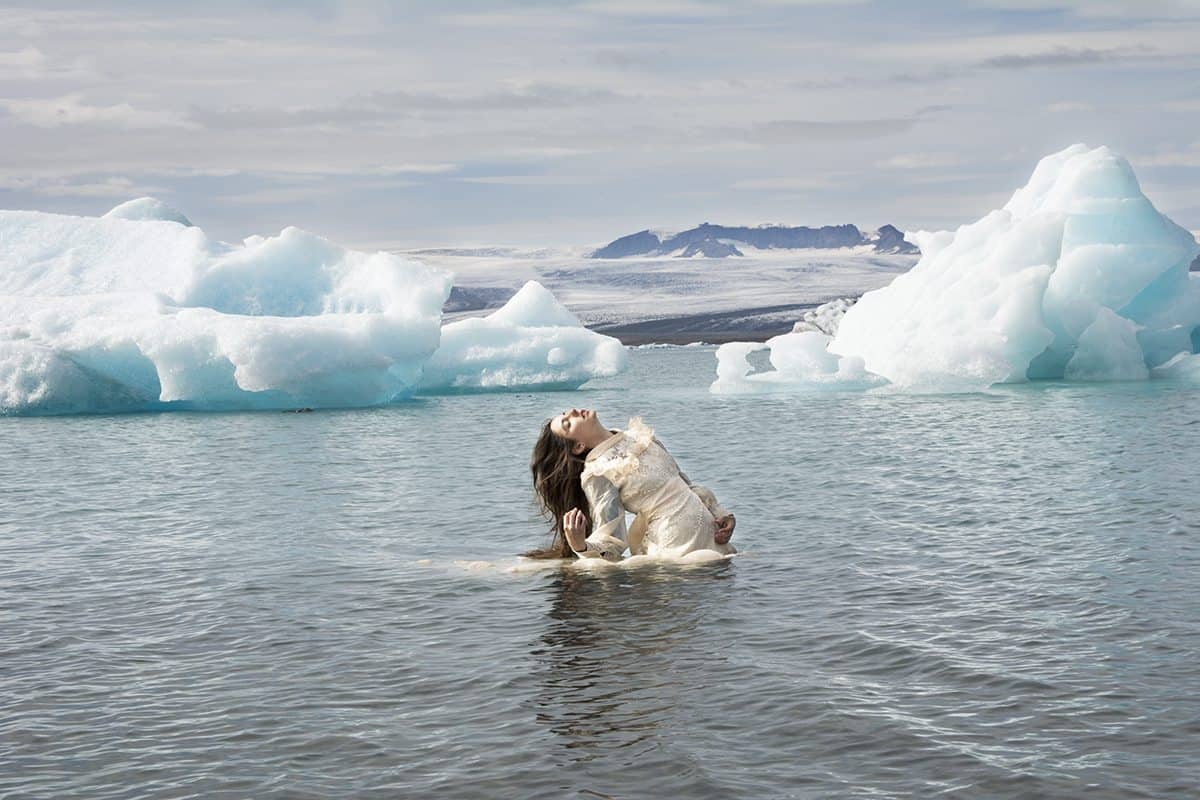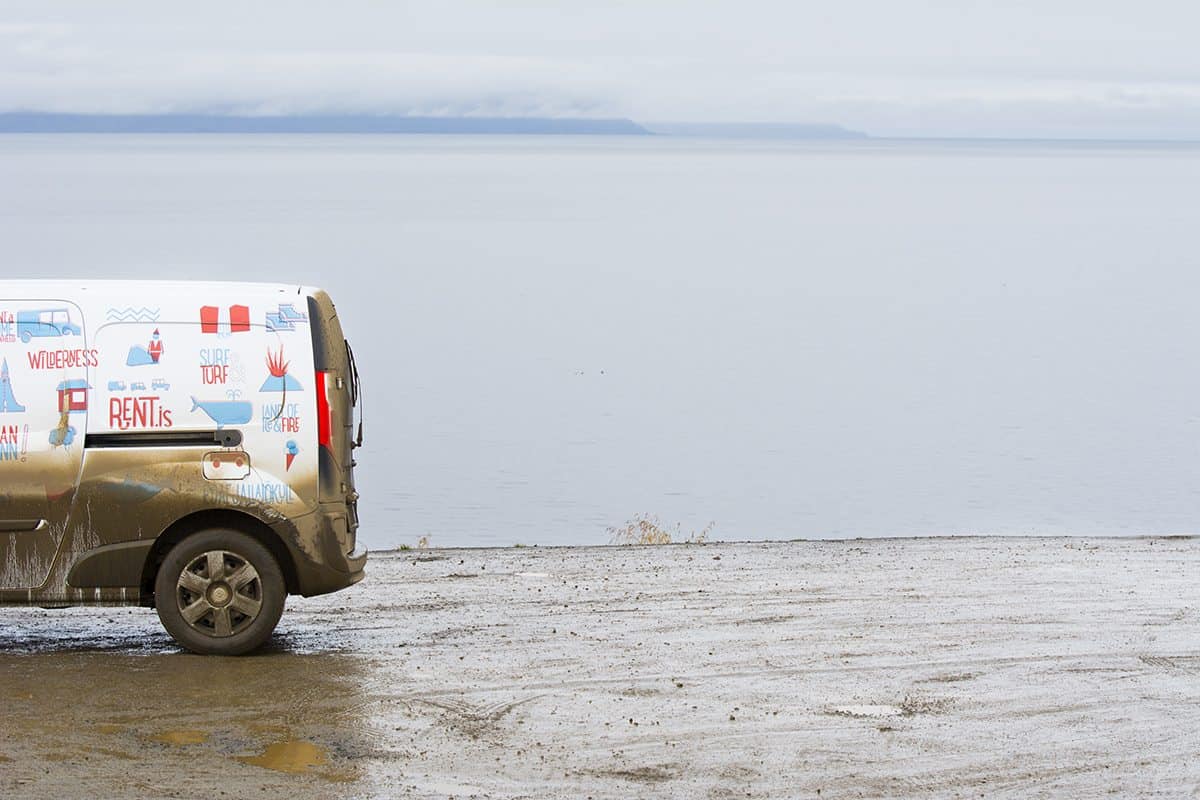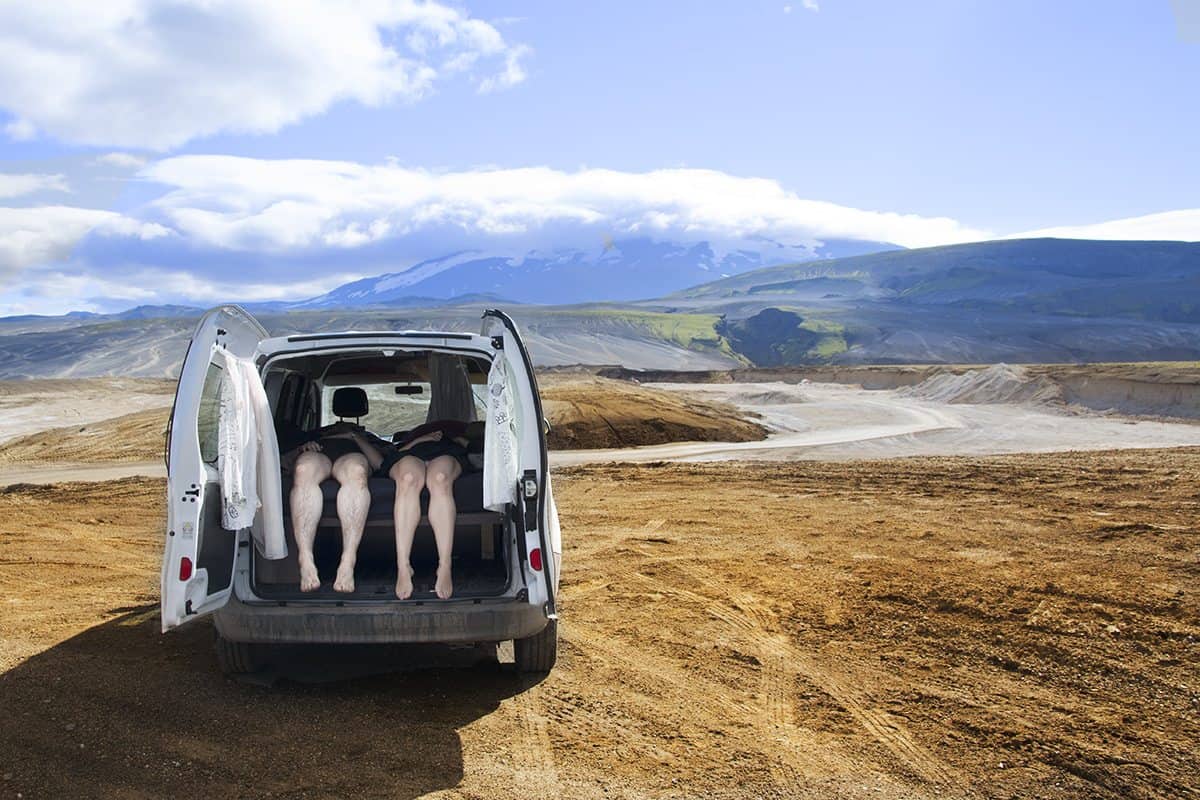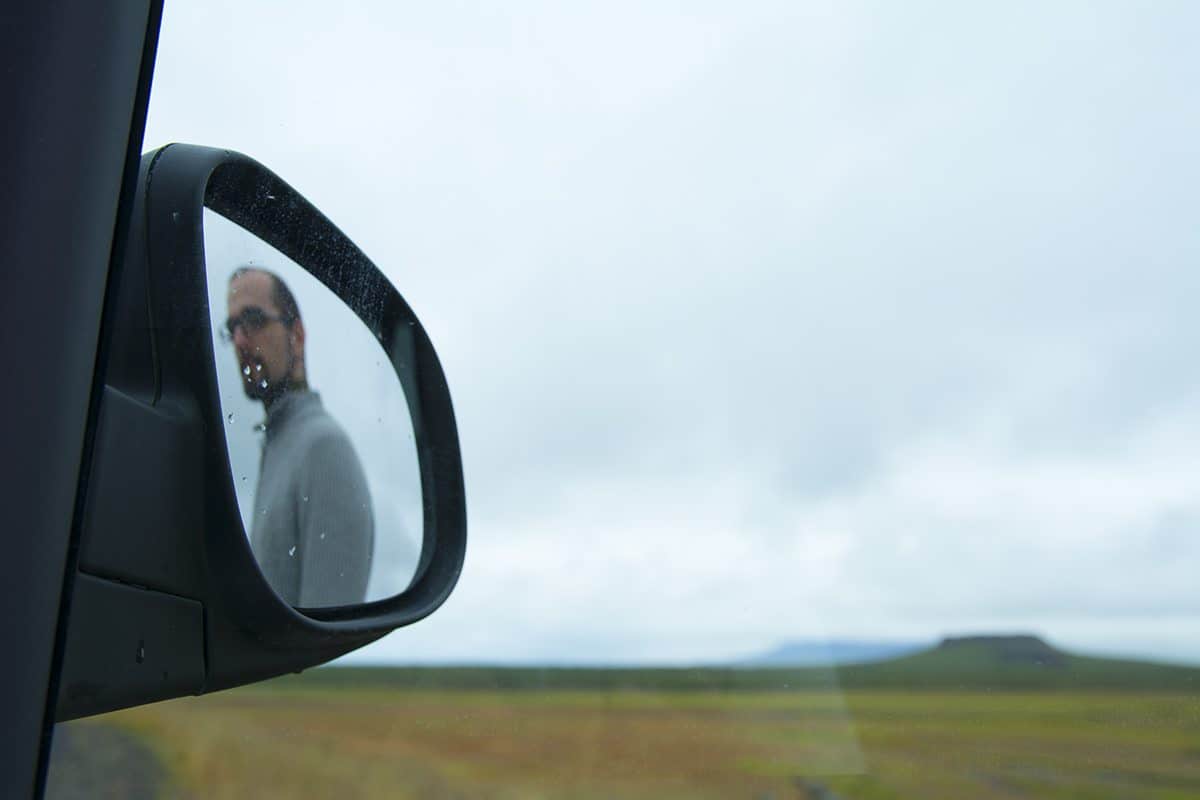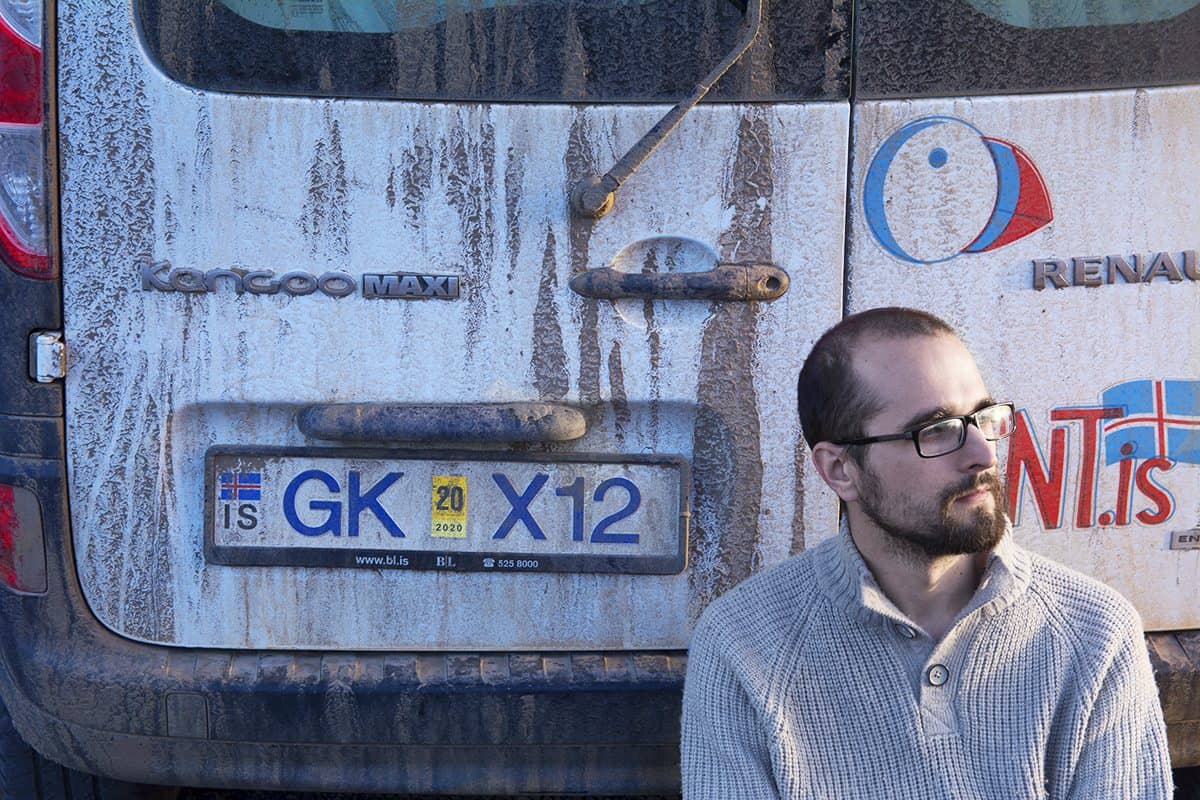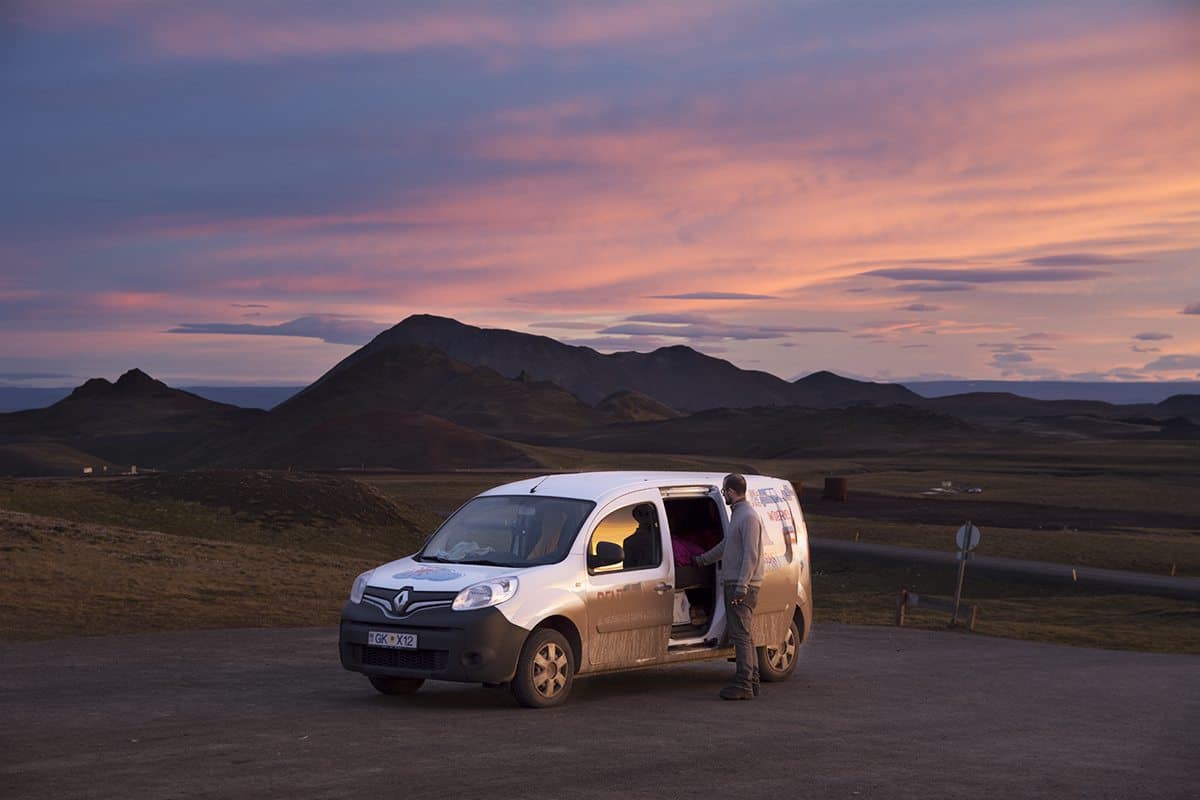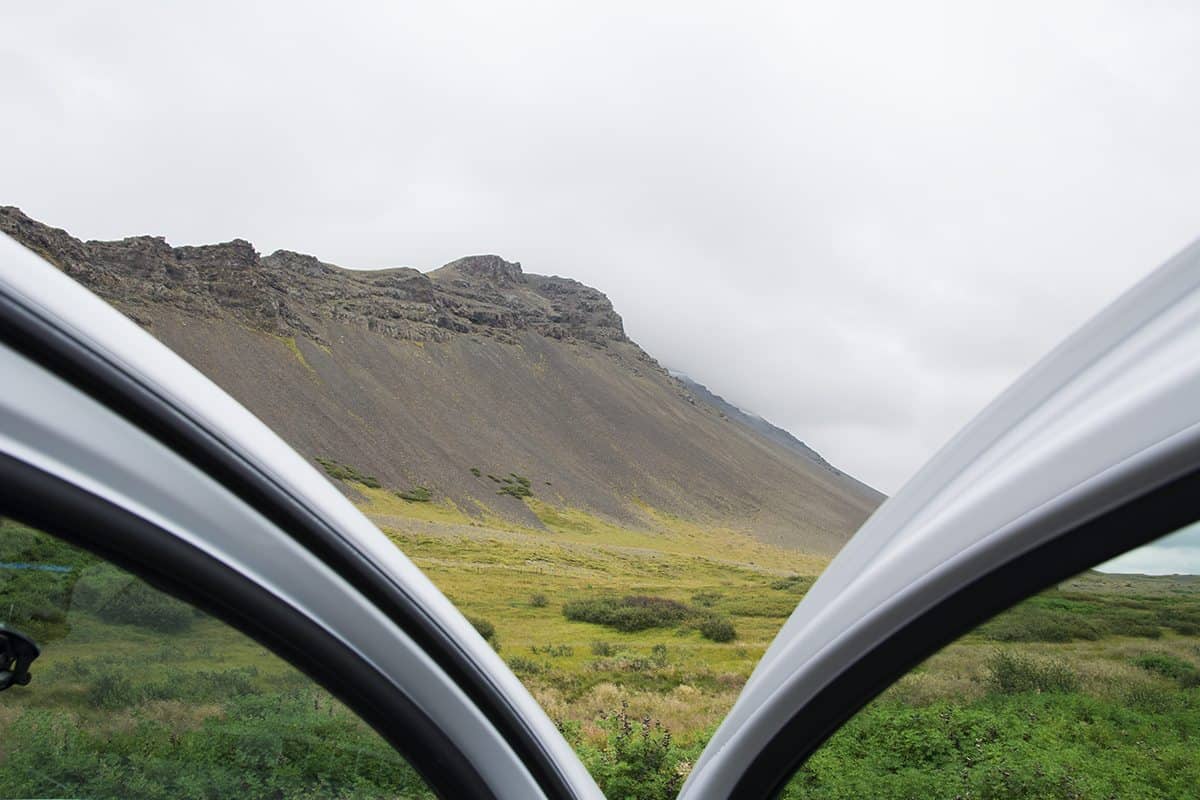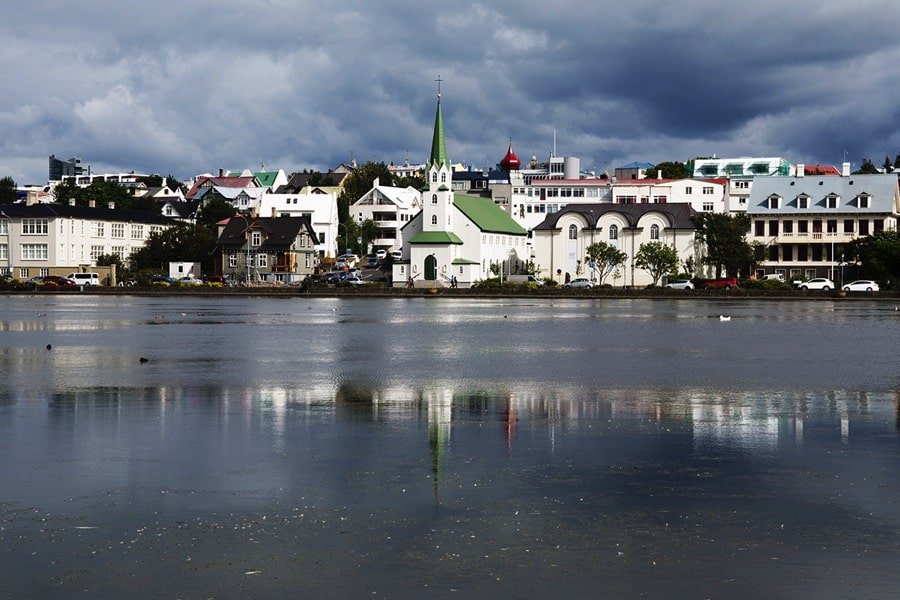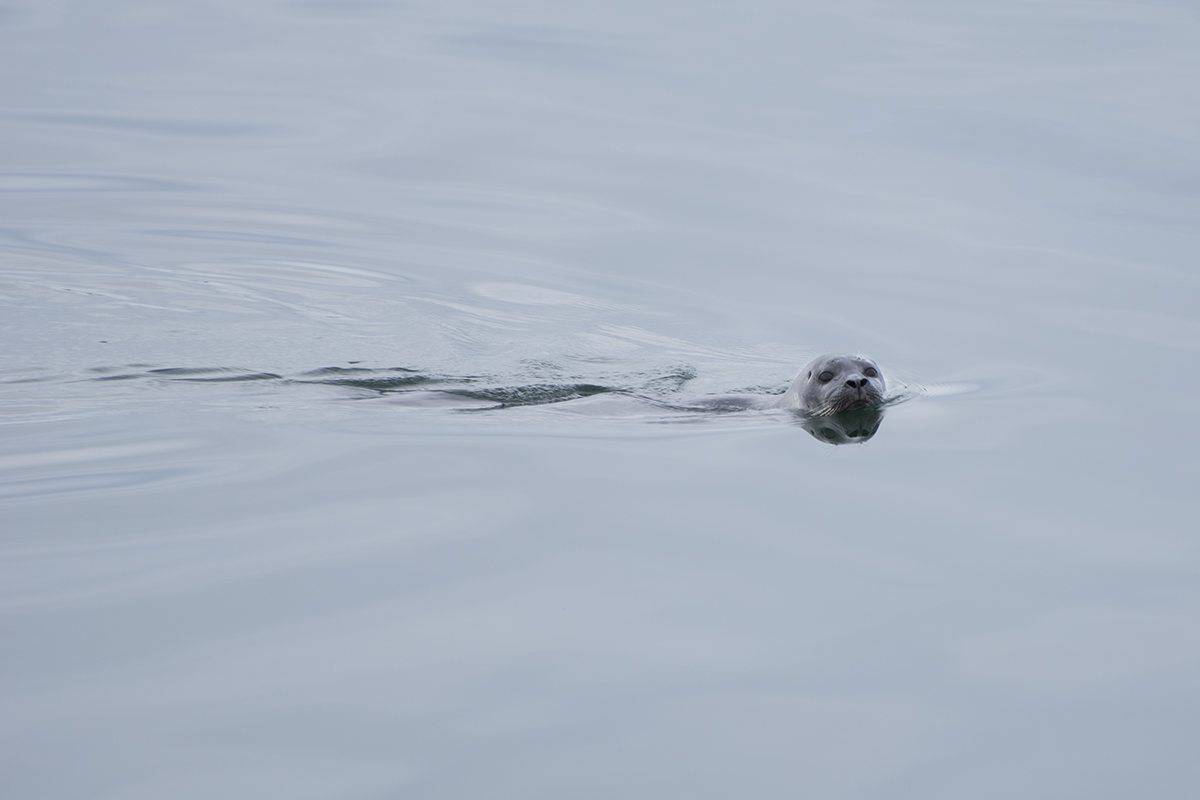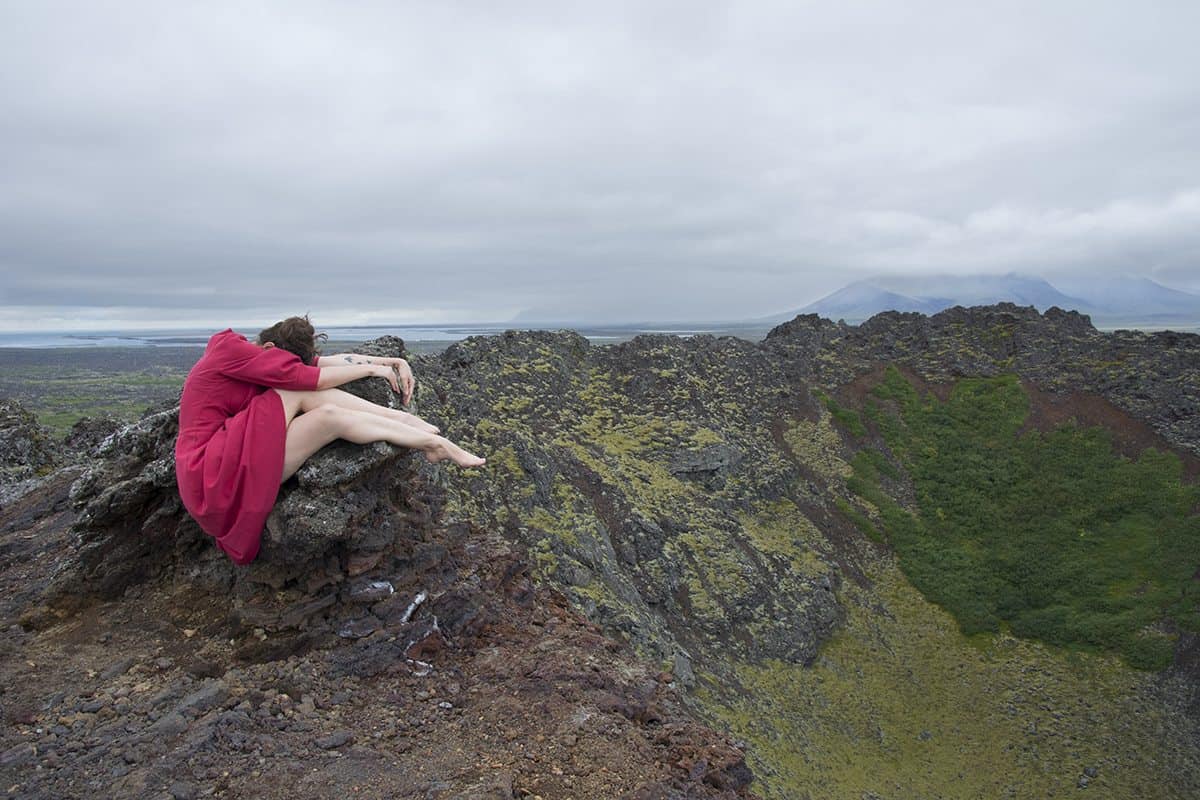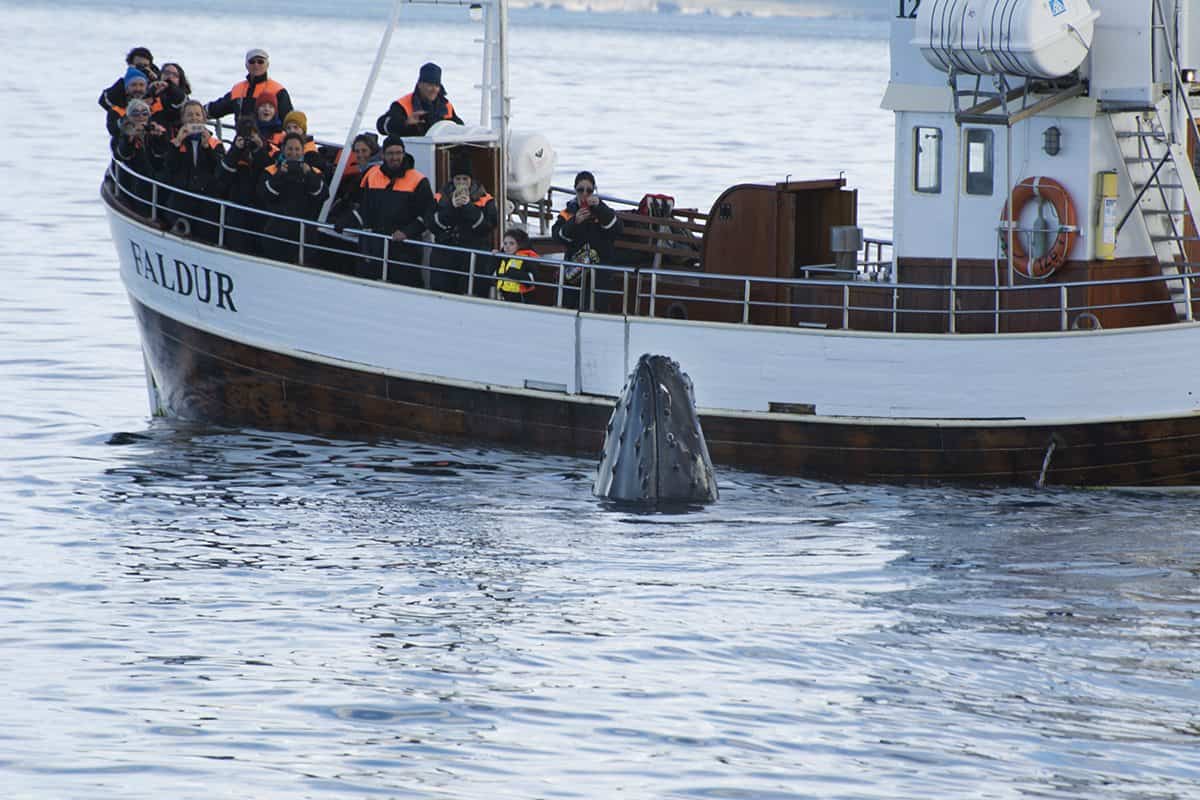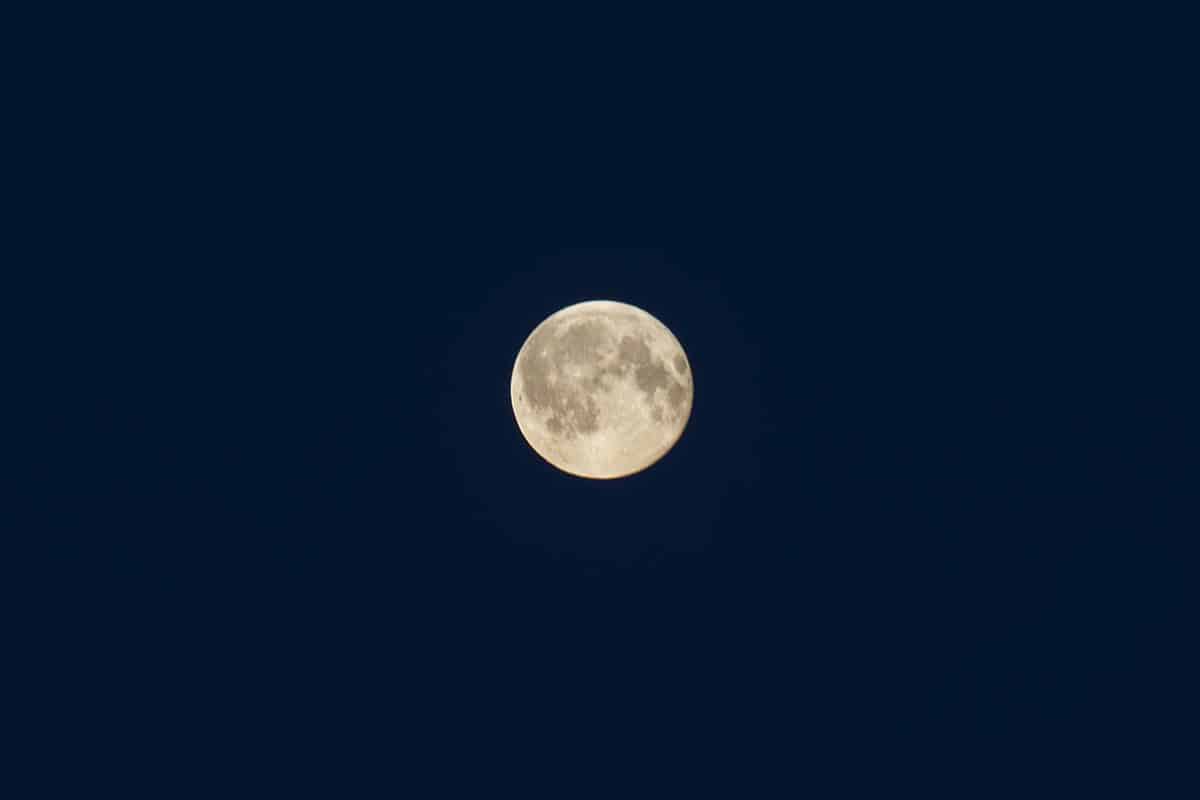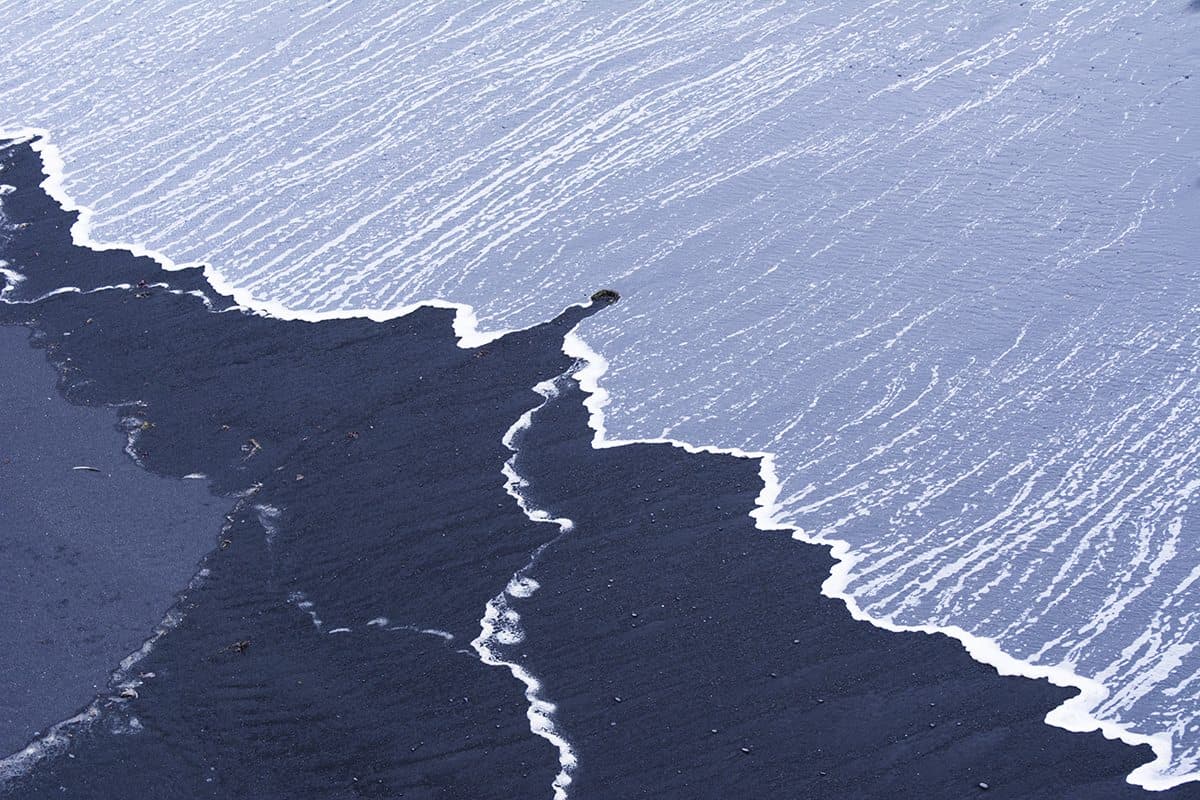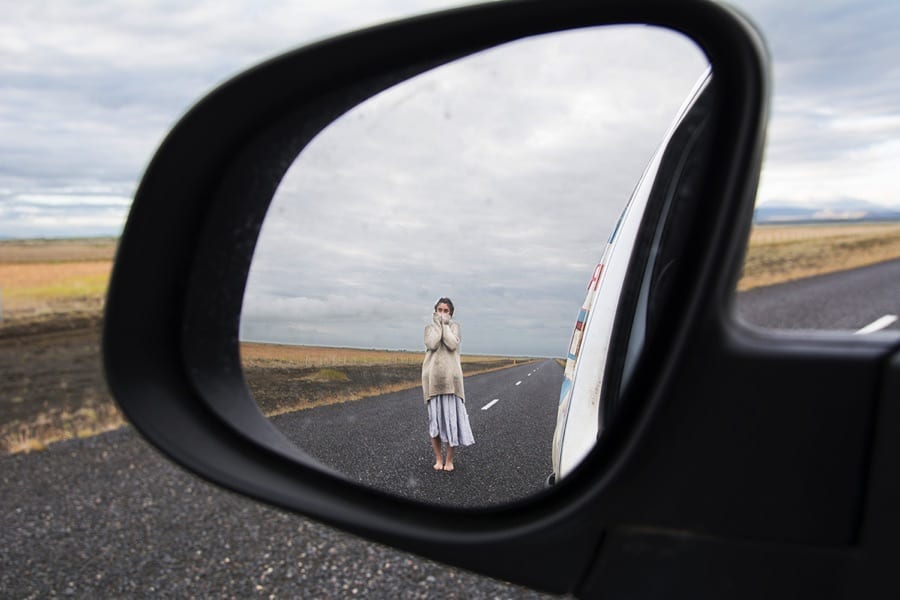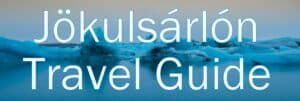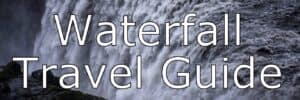Once upon a time there was a van called Fjörð
I. REFLECTIONS

If you’re getting married, of the traditions that come with it, one of the most greeted is the Honey Moon. Probably, from all the rituals in the celebration, it is the most enriching. So, when we decided that to conclude our November 2015 marriage we should go on a trip there was little to no doubt about where: we wanted to go to Iceland.
We didn’t wait much to buy our tickets and, during 9 months, this trip has been the big star on our calendar. And now, while we write these lines, that star has gone by but it stands as photographs, memories, yearning.
If we’re asked about Iceland, we would answer ‘Ice’, we’d say ‘Purity’, ‘Raw Beauty’. Because we’ve never been anywhere else that has such a number of wonders per square kilometer. Driving in our Kangoo Camper van from
Rent.is, we felt the continuous urge to pull over to the roadside every 10 km, and that’s during the whole two weeks of the trip.
As other users mention, one of the key reasons in order to get a camper is the freedom of carrying your ‘nest’ everywhere, together with the almost free
camping all around the country. As it stands, if tourists are able to make a little effort in reducing their footprint, this freedom is a gift when travelling.
The fact that Iceland population is so little and so spread, together with the abundance of empty swaths of land, makes it very easy to find places to sleep right in the middle of Nature, within a solitude a quietness that helps contribute to the fact that Iceland, sometimes, seems to be a totally different planet.
Our trip commenced in Reykjavík and we followed the Ring Road, or
Route 1, clockwise all around the island during two weeks. It was while getting out of the city, to the North, where we first faced nature in its pure and wild form. Iceland is a mountainous country, sometimes rugged and with no sign of the omnipresent crops on other parts of Europe, covered by mists and of an unusual quietness: we’d never seen water that reflected so well its surroundings, not unlike mirrors.
And this notwithstanding, the quietness is embedded in the landscape: mountains composed by porous and fragile rock erode, and at their feet their remains form gentle slopes, as if melting; retreating glaciers leave behind wide blue lagoons on which icebergs gently float; volcanoes dot the landscape, with their irregular eruptions shaking and transforming their surroundings; accumulated magma close to the surface expresses itself in the shape of geysers, fumaroles or thermal pools. Iceland moves, it’s in a continuous shift that deeply contrasts with its solitude. For kilometers we could travel almost alone, keeping only the company of the countryside and us.
Our main purpose for this trip was to make Fine Art photography, but we’ve left with the sensation that we’ve not done justice to the allure of the place. Placed against what we’ve seen, felt and experienced, photography is just an imitation, a coarse interpretation of this reality. However, for us it was an interpretation, a way of conversing with it. Photographing Iceland is talking to it in whispers.
For us it was also deeply touching to be able to contemplate its fauna for long hours, those species that are so hard to see (or simply don’t exist) on the Mediterranean. To see the majestic whales during their summer visits to the northern fjords was one of the greatest experiences in our life. It is no question that we nicknamed our camper ‘Fjörð-van’ after the fact! (editor’s note: fjörður = fjord)
On so many different places we were able to see colonies of seals, basking in the sun in their glorious laziness, or popping up their heads out of the water to check out the colourful tourists. Or the myriad Puffins and other birds, nesting in the cliffs and ready to go back to the ocean once the young are ready. We profoundly enjoyed these animals, free and wild, they’re another of the multiple surprises that enriched the trip a lot and if before they had our full respect, now even more.

We still recall that cold night, in which, shielding ourselves from the wind within the open back doors of the camper we were preparing some brew with the small gas kitchen. To our left we had the full moon, casting its pale light over the mossy rocks of the lava fields; to our right the almost ever-lasting and shy remnants of the sunset with the last blue hues of the past day now nearly dissolved in the night; and between both were the Northern Lights, dancing before our eyes in greens, purples and whites like a huge fish crossing the dark blue depths.
While the wind played on the outside, we reflected on the very special experience we had just been involved in, on that unique moment because after all, even though we’re all unique (or so the DNA says), what’s the result of the concurrence of different people, landscapes and instances of phenomenon? In the same way we are unequal to each other, those patterns of Northern Lights will never repeat again, in that very moment, hiding in our sleeping bags, in the most northern place we’ve ever been.
This moment was fleeting but so inherent to the ‘Icelandic experience’, so deeply marked in our memories now, as are many others. Iceland, somehow, with its rolling hills, lava flats and melting mountains, contributes to this reflection, to this dialogue with the environment, to be a bit more conscious of the planet’s beauty, to love and appreciate it in all its shapes.
No photo can thus be as beautiful or evoking as experiencing it directly through all senses, but now all we have left is the memories and a handful of pictures that help us reminisce those moments. Of our camper half-soaked in dust from the damp gravel roads, of which various people wanted to take a picture of! For that’s the way of experiencing Iceland: travelling those paths that go farther than asphalt, with mud under the wheels, ice on your hands, stone and moss on your skin and the sea in your eyes.
II. ABOUT OUR CAMPER FRIEND

While the main focus of the trip was photographic, as it shows in the photo-heavy content of our blog, there are still some ideas and tips we would like to share (not the very common ones, though).

The Camper Van, as taken (and dropped) on Keflavik Airport Rent.is office was a self-sufficient home, we’d never gone camping before and with so many places to go and things to see, the idea of having to fumble with a tent every night and morning was not to our liking.
With a Camper we just had to park somewhere (we alternated between camping and wilderness), mostly after-dark, and we would be set for the day. The fact that we could get the heat running on the second battery, that we had light and refrigerator, that the bed space was fixed, and that all our luggage (and we had quite a big amount of it), the foldable table and the well-equipped ‘lunch utility box’ (with all the necessary stuff for cooking sans the food itself) did fit on the bottom half of the vehicle was a big plus.

The Kangoo we rented was quite comfy and gave a smooth ride, this had been a concern for Leila who is always getting motion sickness when we go through any kind of curvy road in Spain, but the trusty van was stable and could cope with whatever the Ring Road threw at it while keeping Leila happy. Of course it’s not the vehicle to bring into the highlands, ford any river or get into the F roads, but even after a two week stay, we felt that there’s more than enough content to keep you engaged every single hour of the day (and we did miss some stuff)!
III. FINDING A PLACE TO SLEEP

Once one goes into the ‘wilderness’, some day-to-day elements are expected to go missing, but even in the North-Western areas, or far from the cities, we found that a combination of camping facilities,
Swimming Pools and the omnipresent N1 gas stations did cover all our necessities.
There’s nothing like an Icelandic ‘Swimming Pools’, for they’re more like water parks than anything else! Recommending specifically
Mývatn Nature baths on the Ring Road.
Finding a place to park was left to sheer luck the first days but we eventually found some very good places and criteria. We understand that getting the van into some farmer’s land is not the best of ideas, and luckily farms are easy to make apart as they’re indicated in the road by a (most of the time) blue sign. Within city bounds it’s also not allowed (nor practical), might as well get into one of the omnipresent camping sites at this point!
Since there’s, mostly, a direct correlation in the quality of the road and the traffic that goes through, our best choices for placing the camper to the roadside on a quiet place on which to get the dinner done and rest were:

– Three and two digit roads (with preference to the former), specially the gravel ones. These do not have a lot of traffic and have many prepared road-side stops.
– Roads with large blue panels such as these, specially, within those, roads that go to two or more farms (such as the one to Múli & Syðri-Raudamelur).
– Roads that go to some uninhabited place such as a glacier or ‘place of interest’. We have a keen memory of stopping on the way to Dettifoss, where we saw the Northern Lights, or waking up among glaciers beside road 221 on the way to Sólheimajökull.
IV. OUR ROUTE: LIVING (N)ICELAND
We chose the clockwise route, trying to get the last days of summer in the North before we started travelling South by Akureyri. By meeting some people on the road, more so for those doing the counter-clockwise route, we got the feeling that going into big detail about something was, in a way, spoiling it for when they’d be able to see it with their own eyes. However, we feel there are some pros and cons to some of the things we did, and they might be important to someone reading these lines and planning their own trip.
We got the Camper from the very beginning at Keflavik, and planned to drop it at the Keflavik at the very end. This allowed us to get a high degree of flexibility as we didn’t want to book anywhere, for we expected Iceland to surprise us and we did indeed plan some visits on the go. Camping areas during the second half of August always had some room, even the busy Reykjavik one.

Since we arrived to KEF quite late, our first night was spent on the way to Reykjavik, on which we spent two days, visiting museums, walking around, seeing some art galleries, eating out and getting provisions. We felt it was important to get in touch with the History of the Island in a more direct way before getting lost among its roads. Two key elements were The National Museum, which has a permanent exhibition on the ‘
Making of a Nation’ and many other goodness.

We also had the luck to choose visiting the Reykjavik Settlement Exhibition at the 871 Museum. Somehow reading and seeing the archaeological remains of ancient times sends you back to those years of wonder and adventure, quite the experience!

After Reykjavik, we continued right north through the Ring Road, sleeping close to a village in view of Hvalfjörður, after the tunnel. As readers of the Saga, we enjoyed the museum in Borgarnes about Skallagrim and son and made the right decision by leaving the No.1 to detour via the No.54, stopping to go up the Eldborg, a short walk with impressive views (we’d never been in a volcano either, so there’s that!), and the impressive Gerðuberg basalt rock formation. We left the Snӕfell peninsula for another occasion and took a short-cut through the No.56, arriving at Búðardalur at night. We couldn’t visit the Westfjords for we didn’t have enough time.

Visiting the Hvammstangi and Vatnsnes peninsula took easily another day, the chance to see seals left and right was something we were not ready for and we thoroughly enjoyed! There’s at least three spots in the peninsula in which they’re easy to see, and we found them in two.

Following road 76 north, seeing Tröllaskagi peninsula is a must. There’s a series of new tunnels on the northern part that connect Siglufjörður and Ólafsjörður, bypassing the old mountain pass on road 82. Please forego these tunnels and take 82, the sights at the top of the mountains were breath-taking. However the road is not well maintained (since who’d be the one taking it instead of the tunnels?) and perhaps not the best choice on a non-summer sunny day. Road 82 is something to behold, though.
We passed by Akureyri, were we slept at the Hamrar camping in the outskirts, it was a nice busy place that even had some rabbits lurking around! A good place to rest for our next day, which had some content.
We had been expecting to get on a Whale Tour since before we even got the camper, we found that the ships were a better choice than the zodiac, for they were higher, and we chose not to stop by the Puffin Island (we’d see them later). We were gifted with the sight of these incredible animals, and we’d gone on a second round if we hadn’t our next step laying south.
We backtracked a bit south and followed route 85 and 845. The lone nothingness of the lava plains before Mývatn is totally worth approaching the lake on this route. We navigated the lake on the southern, eastern and northern shores, stopping often on the amazing lava formations. But nothing prepared us for the very special relation that the shallow magma has with the landscape here: after the mountain pass besides Námafjall see Hverir, with its fumaroles and clay boiling pits, go a bit to the north to see the fields of Krafla, backtrack to finish the day in the natural baths of Mývatn. See the Northern Lights while bathing there, under a full moon? Too much to ask for!
We camped to the East, in road 862 to Dettifoss. Which we saw the next day, and made it all the way to Egilsstaðir, visiting Borgarfjörður and spending the night in Seyðisfjörður. This last place is worth visiting for the mountain pass alone.
The trip to Höfn has a very interesting shortcut through route 939, with some sights to behold. On Höfn we enjoyed the swimming pool, sleeping between glaciers.
On the southern route we saw alm¬ost all glaciers, but didn’t hire any excursion to go on top of them. The sights on the south are quite unlike those on the north. Worth noting the comparison between the misty fjörður and the sandur and Eldhraun plains.

We spent nearly a whole day playing around the Jökulsárlón, and another in the Skaftafell park, from which heights you can see the impressive Skeiðarársandur in its massiveness. We arrived to Vik close to darkness, but on time to see huge amounts of Puffins in the roads to the cliffs (the second left past Vik, specially) and yet still in time to walk the nearly four kilometers to the crashed down DC-3. A path worth walking even though the couple hours it took meant we came back way after sunset.

We camped in road 221, right on the way to see Sólheimajökull, which is worth checking out for you can get quite close. This was the day of the waterfalls, and, if sunny, they’re all worth a check: Skógafoss and both Seljalandsfoss and Gljúfurárbui. We tested the road north to Þorsmörk, but it gets from 249 to F249 pretty fast and not worth travelling (without bigger equipment) while going west it’s worth checking the village of Keldur, with very well kept houses, but a restricted schedule (it was closed when we arrived but we could still check it out). The camping at Hella called Árhús was quite good, but truly, the best upgrade from sleeping in the camper is the easiness to make a couple of toasts in the kitchen.

Our next day was full of
Golden Circle goodness, we chose to follow route 26 along river Þjórsá to pay our respects to the gentle, for now, Hekla. We followed 32 south where both cross, and had the chance to see the Stöng village, both the re-made one and the old one, although the road is more alike to an F road and it’s thus a long hike without the car. After visiting the Þjórsá on both sides we went up road 30 and into Gullfoss, worth checking even though it was not sunny (for we learnt that sun + foss = rainbows). What we found out of this world was the geothermal playground surrounding Geysir, which has been asleep for some years, not like the beloved Strokkur, which was fond of propelling jets of water high into the air every 5-10 minutes. We spent some hours there, until sunset, camping in route 365.

From there we decided to take it slow, write home, visit Þingvellir and its surroundings and fall back to Grindavik’s camping to wrap up on the next day, which would be the last, on which we realized that the Blue Lagoon requires reservation (at least two days, we were informed) so we went to the quiet swimming pool at Grindavik, spending our last hours in the hot pools there. We brought the camper back to the Rent.is people at Keflavik airport and headed back to the airport…
Iceland, we miss you already, we will be back soon.
Happy Camping: #CamperStories
Iceland Travel Guides


If you like what you see, please subscribe to our YouTube channel!
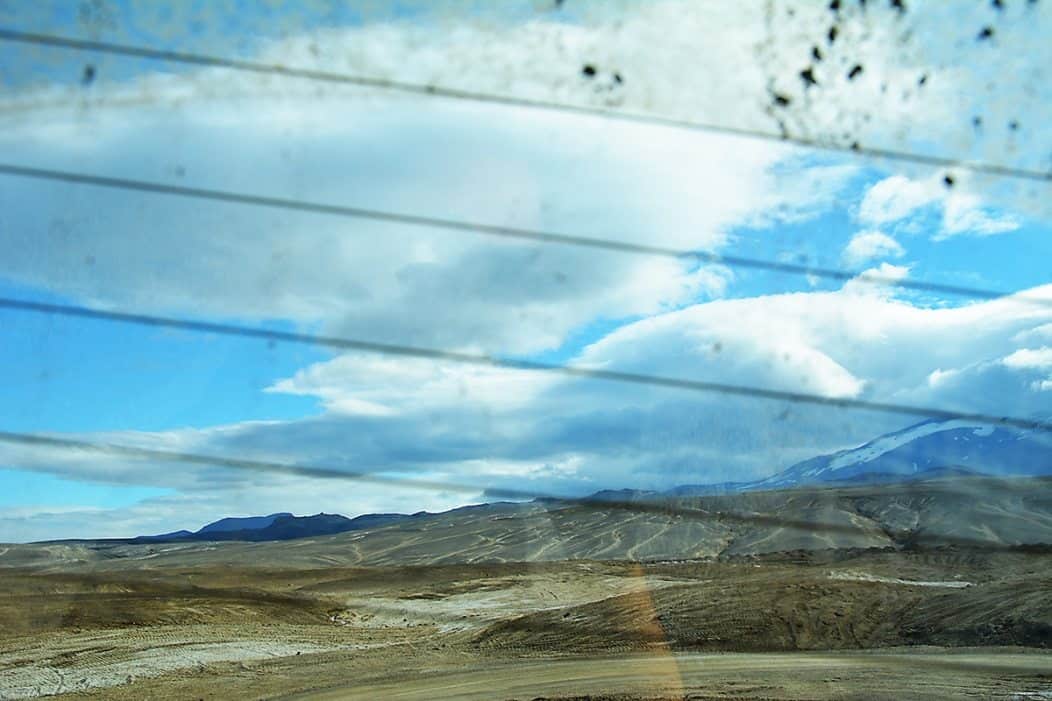 The Kangoo we rented was quite comfy and gave a smooth ride, this had been a concern for Leila who is always getting motion sickness when we go through any kind of curvy road in Spain, but the trusty van was stable and could cope with whatever the Ring Road threw at it while keeping Leila happy. Of course it’s not the vehicle to bring into the highlands, ford any river or get into the F roads, but even after a two week stay, we felt that there’s more than enough content to keep you engaged every single hour of the day (and we did miss some stuff)!
The Kangoo we rented was quite comfy and gave a smooth ride, this had been a concern for Leila who is always getting motion sickness when we go through any kind of curvy road in Spain, but the trusty van was stable and could cope with whatever the Ring Road threw at it while keeping Leila happy. Of course it’s not the vehicle to bring into the highlands, ford any river or get into the F roads, but even after a two week stay, we felt that there’s more than enough content to keep you engaged every single hour of the day (and we did miss some stuff)!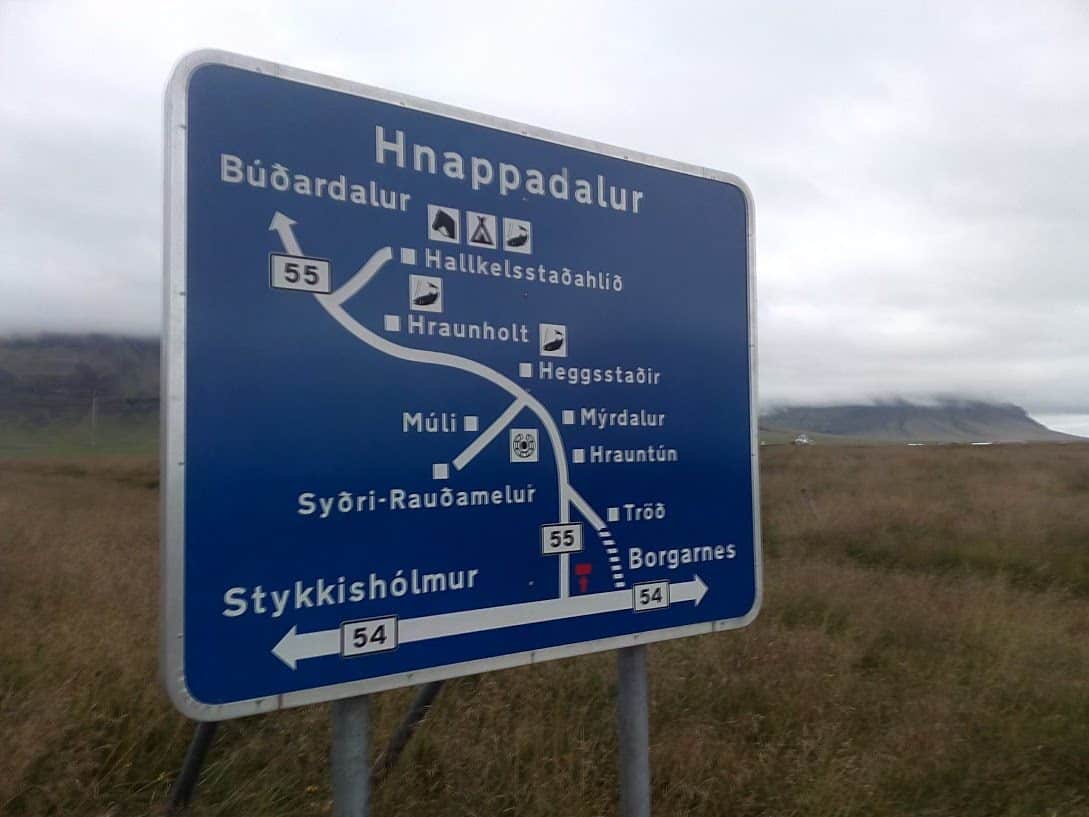 – Three and two digit roads (with preference to the former), specially the gravel ones. These do not have a lot of traffic and have many prepared road-side stops.
– Three and two digit roads (with preference to the former), specially the gravel ones. These do not have a lot of traffic and have many prepared road-side stops.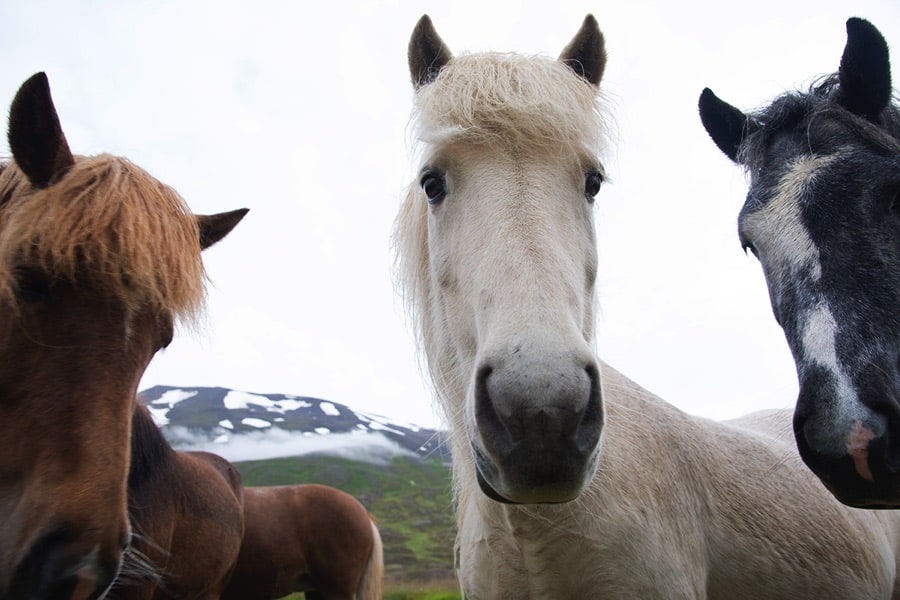 Since we arrived to KEF quite late, our first night was spent on the way to Reykjavik, on which we spent two days, visiting museums, walking around, seeing some art galleries, eating out and getting provisions. We felt it was important to get in touch with the History of the Island in a more direct way before getting lost among its roads. Two key elements were The National Museum, which has a permanent exhibition on the ‘Making of a Nation’ and many other goodness.
Since we arrived to KEF quite late, our first night was spent on the way to Reykjavik, on which we spent two days, visiting museums, walking around, seeing some art galleries, eating out and getting provisions. We felt it was important to get in touch with the History of the Island in a more direct way before getting lost among its roads. Two key elements were The National Museum, which has a permanent exhibition on the ‘Making of a Nation’ and many other goodness.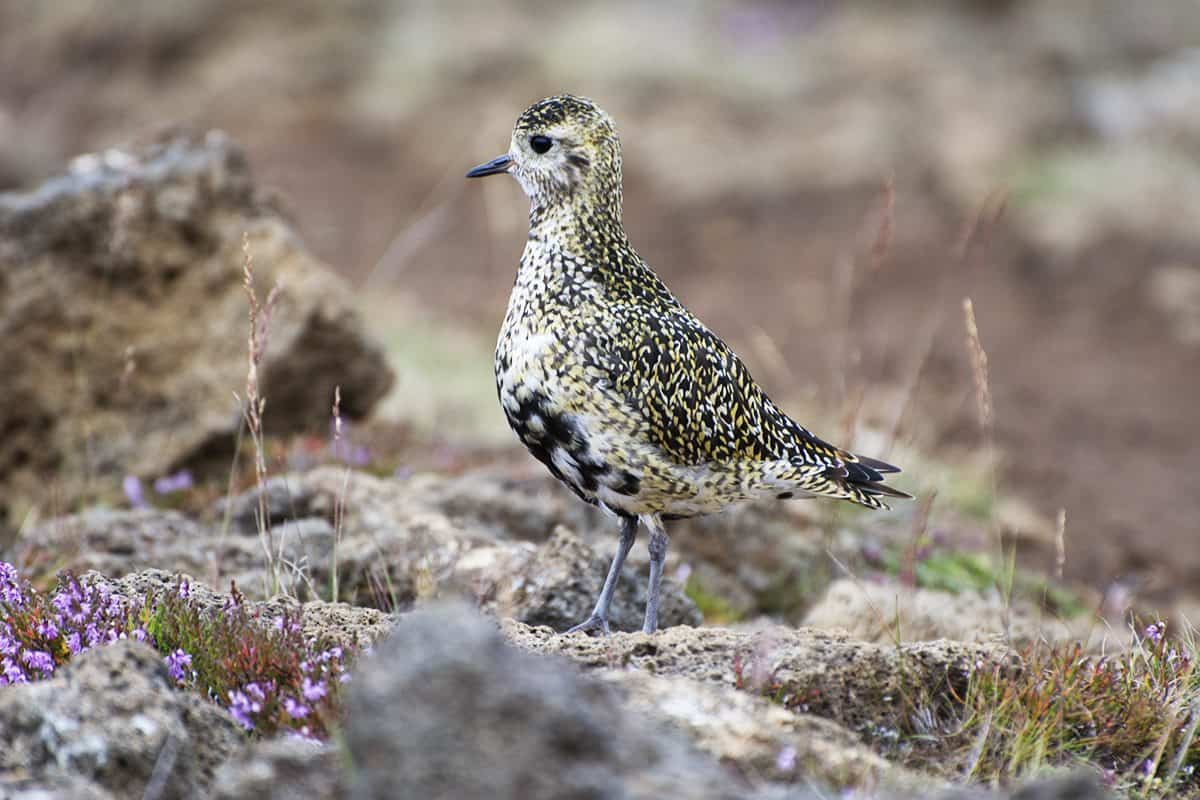 We also had the luck to choose visiting the Reykjavik Settlement Exhibition at the 871 Museum. Somehow reading and seeing the archaeological remains of ancient times sends you back to those years of wonder and adventure, quite the experience!
We also had the luck to choose visiting the Reykjavik Settlement Exhibition at the 871 Museum. Somehow reading and seeing the archaeological remains of ancient times sends you back to those years of wonder and adventure, quite the experience!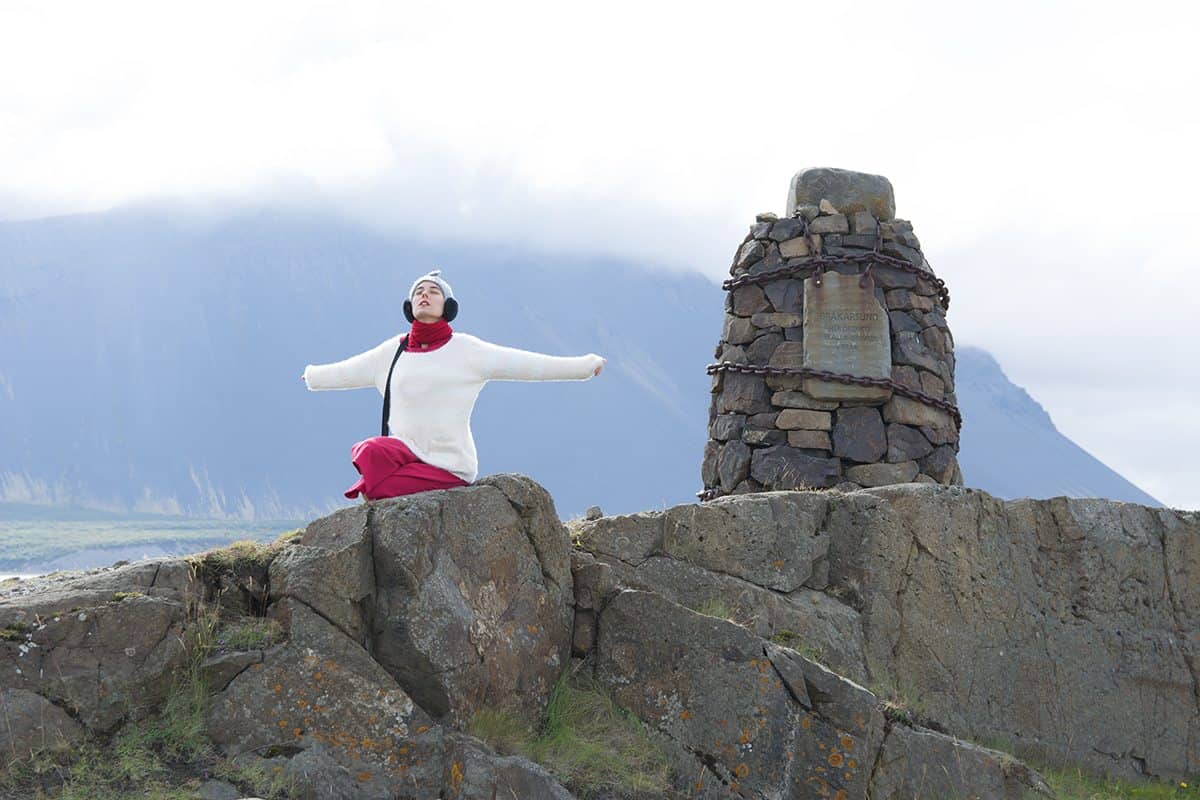 After Reykjavik, we continued right north through the Ring Road, sleeping close to a village in view of Hvalfjörður, after the tunnel. As readers of the Saga, we enjoyed the museum in Borgarnes about Skallagrim and son and made the right decision by leaving the No.1 to detour via the No.54, stopping to go up the Eldborg, a short walk with impressive views (we’d never been in a volcano either, so there’s that!), and the impressive Gerðuberg basalt rock formation. We left the Snӕfell peninsula for another occasion and took a short-cut through the No.56, arriving at Búðardalur at night. We couldn’t visit the Westfjords for we didn’t have enough time.
After Reykjavik, we continued right north through the Ring Road, sleeping close to a village in view of Hvalfjörður, after the tunnel. As readers of the Saga, we enjoyed the museum in Borgarnes about Skallagrim and son and made the right decision by leaving the No.1 to detour via the No.54, stopping to go up the Eldborg, a short walk with impressive views (we’d never been in a volcano either, so there’s that!), and the impressive Gerðuberg basalt rock formation. We left the Snӕfell peninsula for another occasion and took a short-cut through the No.56, arriving at Búðardalur at night. We couldn’t visit the Westfjords for we didn’t have enough time.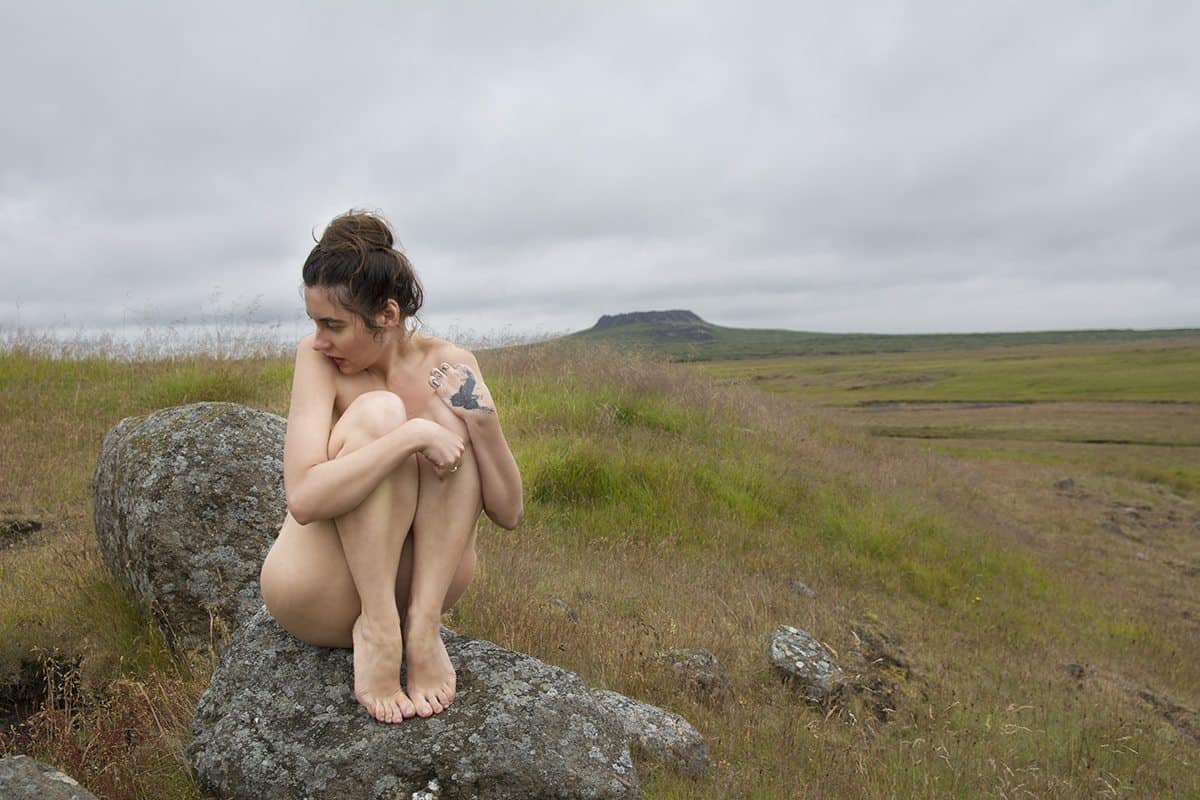 Visiting the Hvammstangi and Vatnsnes peninsula took easily another day, the chance to see seals left and right was something we were not ready for and we thoroughly enjoyed! There’s at least three spots in the peninsula in which they’re easy to see, and we found them in two.
Visiting the Hvammstangi and Vatnsnes peninsula took easily another day, the chance to see seals left and right was something we were not ready for and we thoroughly enjoyed! There’s at least three spots in the peninsula in which they’re easy to see, and we found them in two.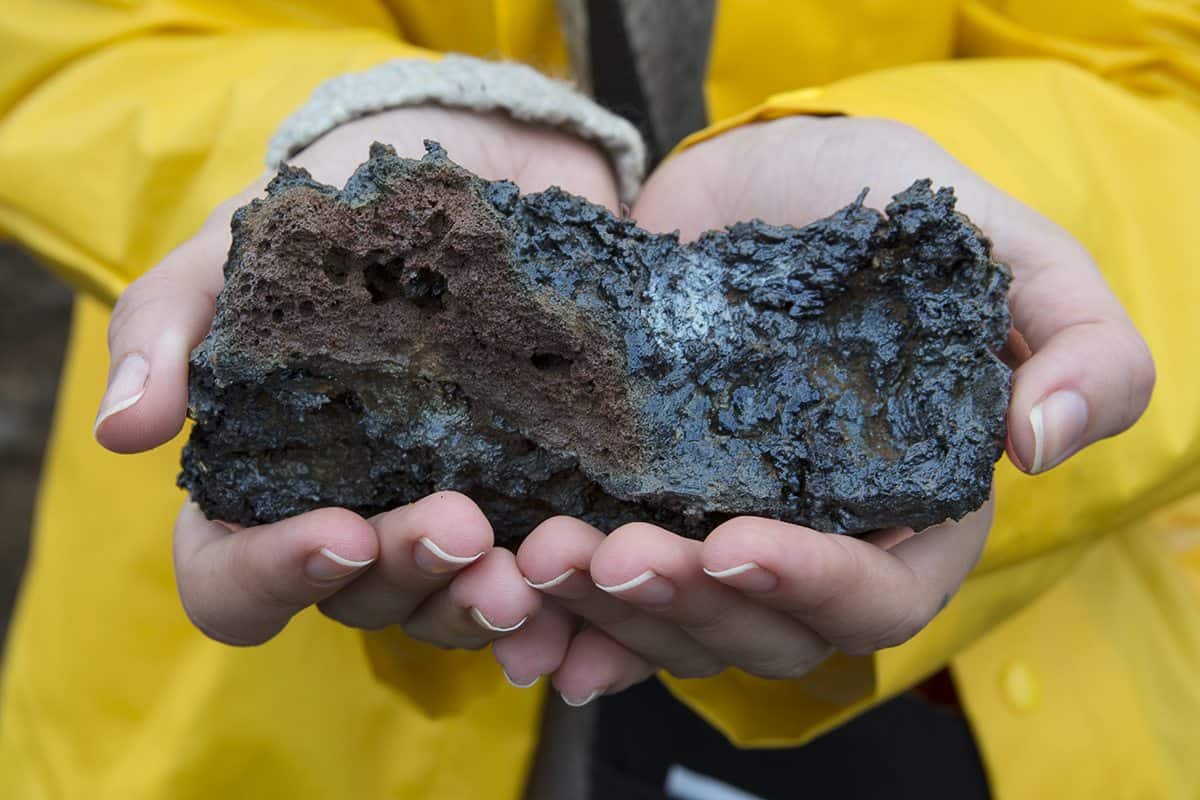 Following road 76 north, seeing Tröllaskagi peninsula is a must. There’s a series of new tunnels on the northern part that connect Siglufjörður and Ólafsjörður, bypassing the old mountain pass on road 82. Please forego these tunnels and take 82, the sights at the top of the mountains were breath-taking. However the road is not well maintained (since who’d be the one taking it instead of the tunnels?) and perhaps not the best choice on a non-summer sunny day. Road 82 is something to behold, though.
Following road 76 north, seeing Tröllaskagi peninsula is a must. There’s a series of new tunnels on the northern part that connect Siglufjörður and Ólafsjörður, bypassing the old mountain pass on road 82. Please forego these tunnels and take 82, the sights at the top of the mountains were breath-taking. However the road is not well maintained (since who’d be the one taking it instead of the tunnels?) and perhaps not the best choice on a non-summer sunny day. Road 82 is something to behold, though.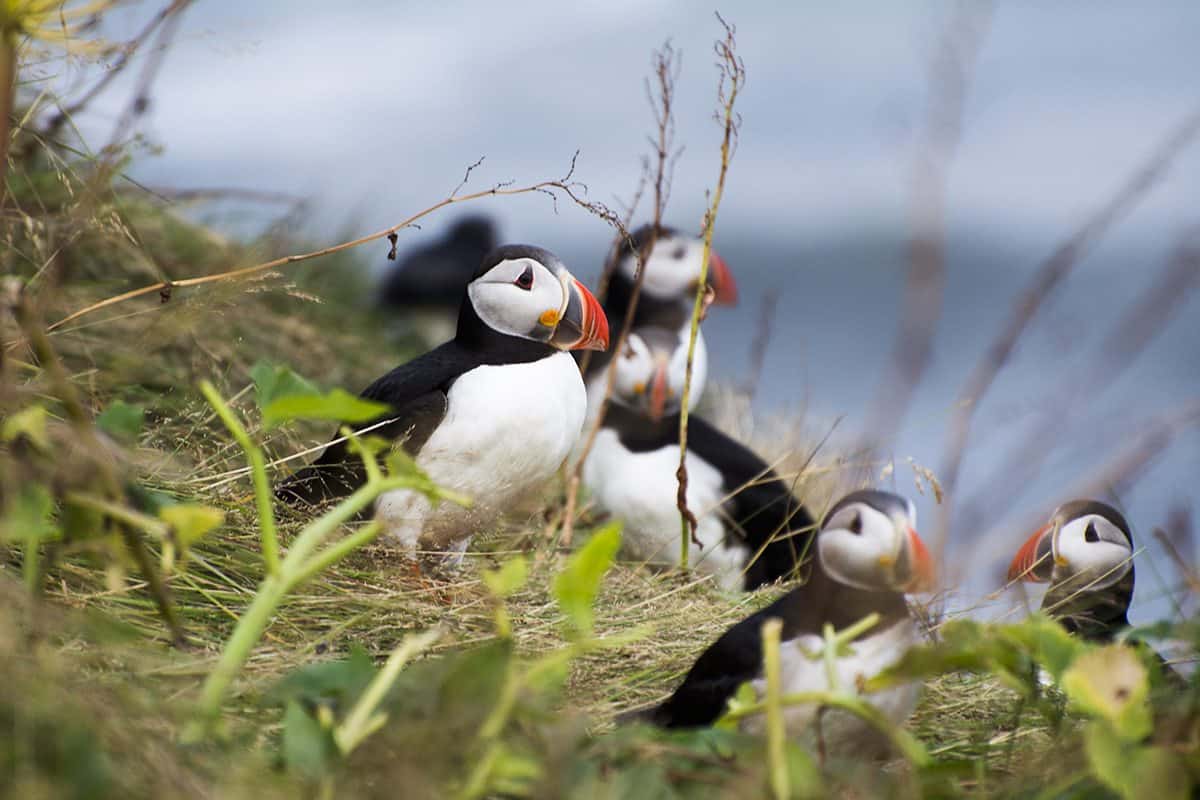 We spent nearly a whole day playing around the Jökulsárlón, and another in the Skaftafell park, from which heights you can see the impressive Skeiðarársandur in its massiveness. We arrived to Vik close to darkness, but on time to see huge amounts of Puffins in the roads to the cliffs (the second left past Vik, specially) and yet still in time to walk the nearly four kilometers to the crashed down DC-3. A path worth walking even though the couple hours it took meant we came back way after sunset.
We spent nearly a whole day playing around the Jökulsárlón, and another in the Skaftafell park, from which heights you can see the impressive Skeiðarársandur in its massiveness. We arrived to Vik close to darkness, but on time to see huge amounts of Puffins in the roads to the cliffs (the second left past Vik, specially) and yet still in time to walk the nearly four kilometers to the crashed down DC-3. A path worth walking even though the couple hours it took meant we came back way after sunset.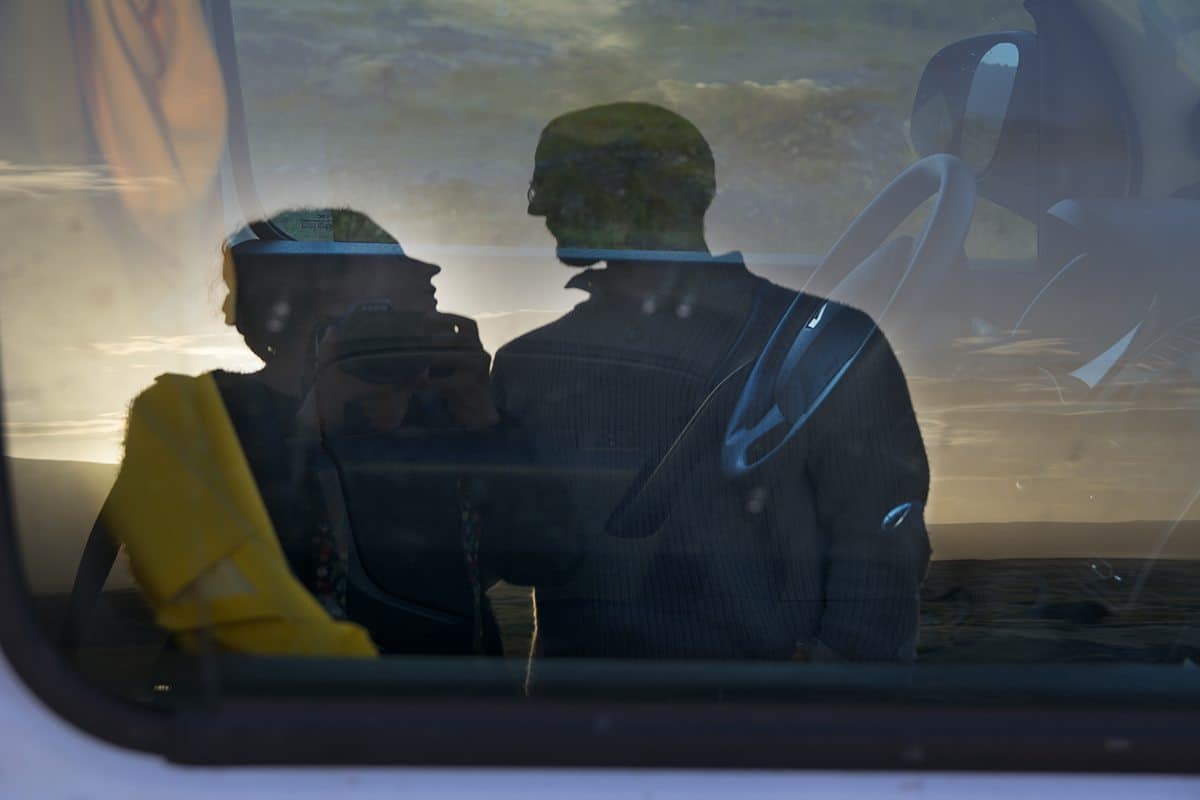 We camped in road 221, right on the way to see Sólheimajökull, which is worth checking out for you can get quite close. This was the day of the waterfalls, and, if sunny, they’re all worth a check: Skógafoss and both Seljalandsfoss and Gljúfurárbui. We tested the road north to Þorsmörk, but it gets from 249 to F249 pretty fast and not worth travelling (without bigger equipment) while going west it’s worth checking the village of Keldur, with very well kept houses, but a restricted schedule (it was closed when we arrived but we could still check it out). The camping at Hella called Árhús was quite good, but truly, the best upgrade from sleeping in the camper is the easiness to make a couple of toasts in the kitchen.
We camped in road 221, right on the way to see Sólheimajökull, which is worth checking out for you can get quite close. This was the day of the waterfalls, and, if sunny, they’re all worth a check: Skógafoss and both Seljalandsfoss and Gljúfurárbui. We tested the road north to Þorsmörk, but it gets from 249 to F249 pretty fast and not worth travelling (without bigger equipment) while going west it’s worth checking the village of Keldur, with very well kept houses, but a restricted schedule (it was closed when we arrived but we could still check it out). The camping at Hella called Árhús was quite good, but truly, the best upgrade from sleeping in the camper is the easiness to make a couple of toasts in the kitchen.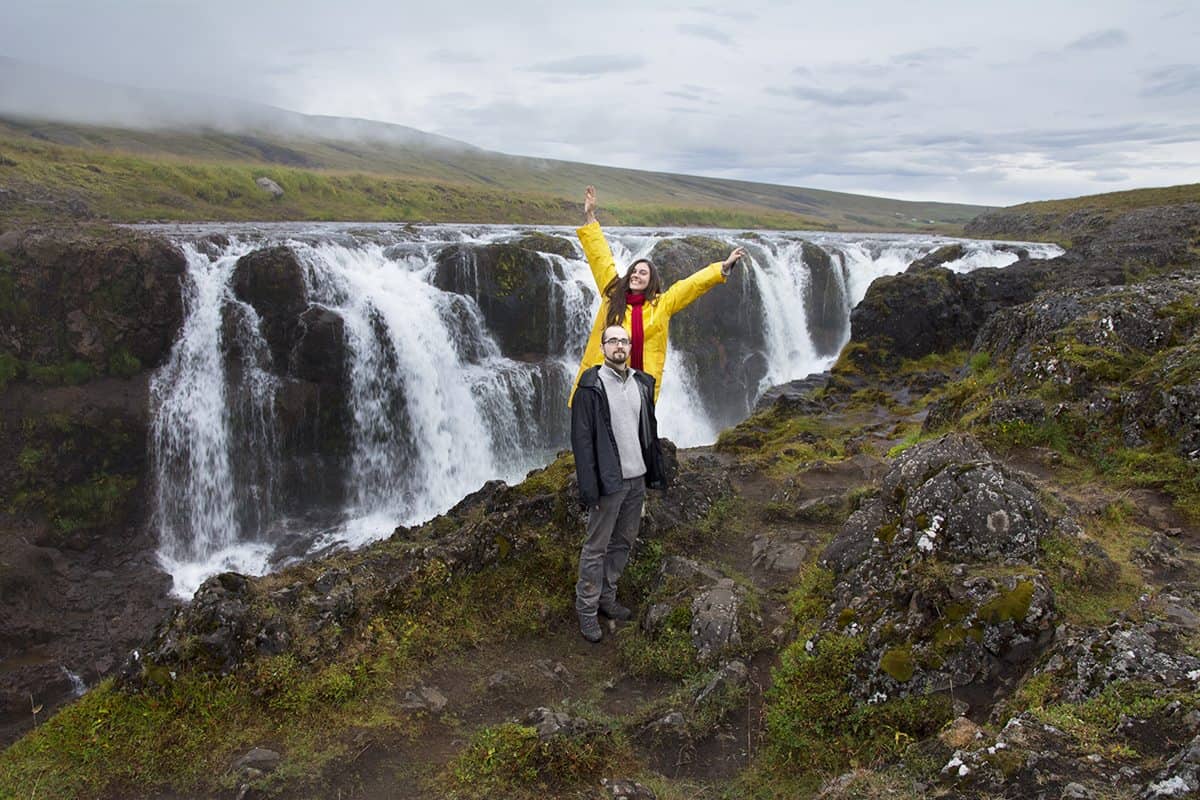 Our next day was full of Golden Circle goodness, we chose to follow route 26 along river Þjórsá to pay our respects to the gentle, for now, Hekla. We followed 32 south where both cross, and had the chance to see the Stöng village, both the re-made one and the old one, although the road is more alike to an F road and it’s thus a long hike without the car. After visiting the Þjórsá on both sides we went up road 30 and into Gullfoss, worth checking even though it was not sunny (for we learnt that sun + foss = rainbows). What we found out of this world was the geothermal playground surrounding Geysir, which has been asleep for some years, not like the beloved Strokkur, which was fond of propelling jets of water high into the air every 5-10 minutes. We spent some hours there, until sunset, camping in route 365.
Our next day was full of Golden Circle goodness, we chose to follow route 26 along river Þjórsá to pay our respects to the gentle, for now, Hekla. We followed 32 south where both cross, and had the chance to see the Stöng village, both the re-made one and the old one, although the road is more alike to an F road and it’s thus a long hike without the car. After visiting the Þjórsá on both sides we went up road 30 and into Gullfoss, worth checking even though it was not sunny (for we learnt that sun + foss = rainbows). What we found out of this world was the geothermal playground surrounding Geysir, which has been asleep for some years, not like the beloved Strokkur, which was fond of propelling jets of water high into the air every 5-10 minutes. We spent some hours there, until sunset, camping in route 365.
